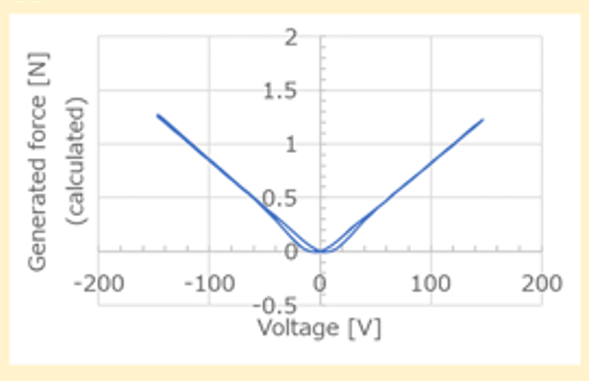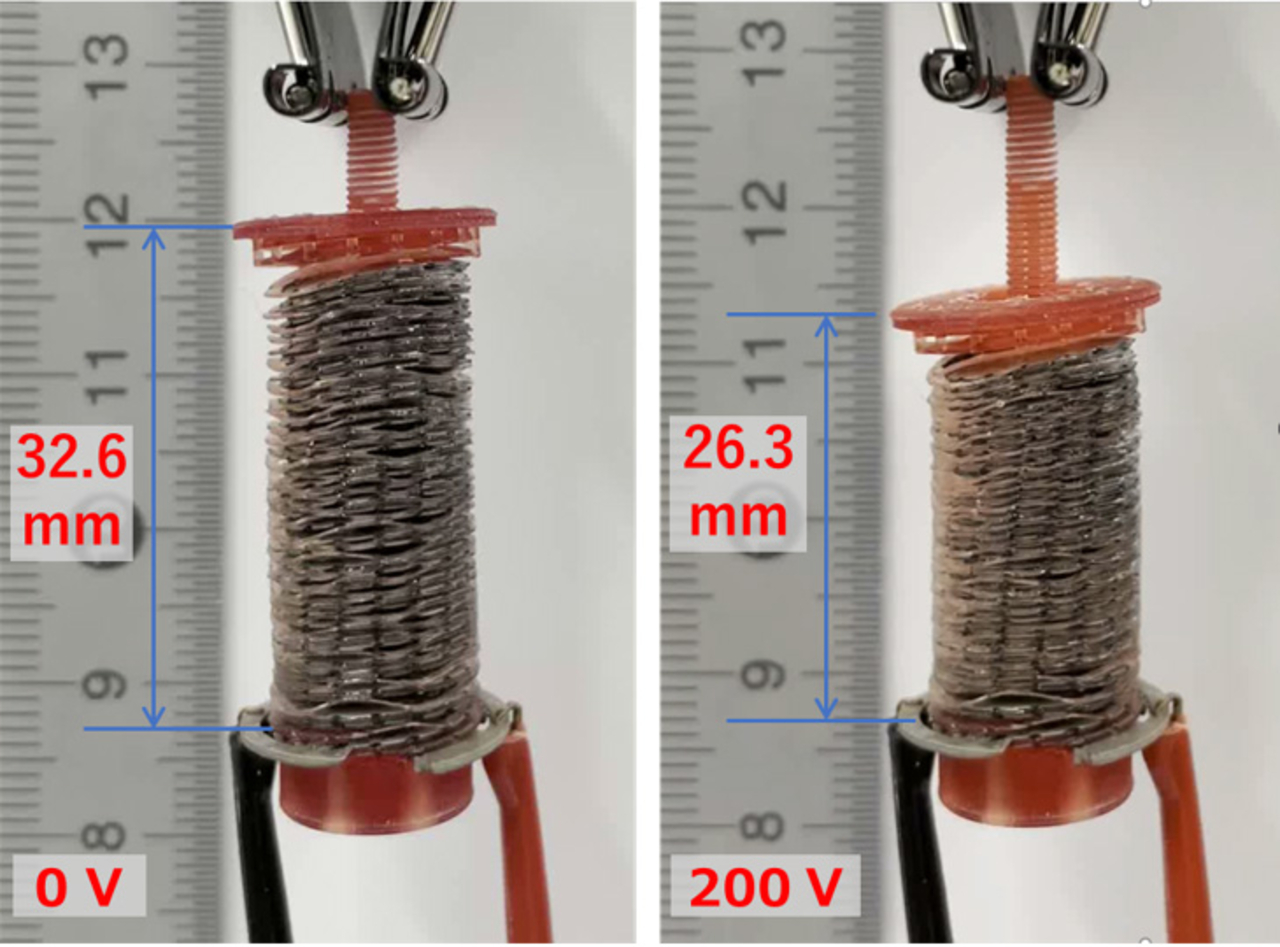Electrostatic actuators are simple and lightweight devices that emulate human muscles. However, their usage has primarily been restricted to moving small devices since they need high voltages to generate significant forces. Now, however, it may be possible to use electrostatic actuators in artificial muscles thanks to research from Tokyo Institute of Technology(Tokyo Tech) that made use of ferroelectric materials to create an electrostatic actuator that can generate a strong force at a low driving voltage.
Electrostatic actuators are devices that use electric fields to move objects. These devices consist of two oppositely charged electrodes that generate a force whenever an electric field develops between them. By altering the shape of their electrodes and filling the gap between them with flexible, soft materials, various configurations for electrostatic actuators have been developed in which the force can emulate that of operating muscles.
The force generated by electrostatic actuators depends on the voltage applied to their electrodes and the charges accumulated at the interface between the electrodes and the dielectric material. Therefore, to generate sufficient forces to support human movement and activities, these devices have to be supplied with a large voltage, which can be hazardous to the body.
Aiming to increase the force generated by actuators while keeping the voltage low, Professor Suzushi Nishimura and his team from Tokyo Tech have increased the accumulated charge by utilizing ferroelectric materials that spontaneously polarize.
The study which was a collaboration between researchers from Tokyo Tech and ENEOS Corporation, Japan, has been published in Advanced Physics Research.
When ferroelectric materials are subjected to an electric field, charge separation (polarization) occurs. However, unlike conventional paraelectric materials, ferroelectrics retain their polarization even after the removal of the electric field, enabling them to maintain a high number of accumulated charges at a low voltage. Furthermore, since the polarization of ferroelectric materials is independent of the voltage, the generated force is linearly proportional to the applied voltage (Figure 1). "Ferroelectric media are superior to ordinary paraelectric media for use in electrostatic actuators in two respects. One is that they can generate a higher force by maintaining a large polarization even at low voltage, and the other is that their voltage response is almost linear, resulting in good device controllability," explains Prof. Nishimura.

Figure 1. The relationship between generated force and applied voltage for ferroelectric liquid crystals
Since the generated force in ferroelectric media is directly proportional to the applied voltage, they can be used to generate much higher forces at lower voltages, making their use in electrostatic actuators a feasible option.
The researchers used liquid crystals in the special nematic phase (i.e., a phase where the long axes of molecules are arranged in parallel lines but not layers) as a ferroelectric material. The material was found to be able to flow like a liquid at room temperature while possessing a rod-shaped molecular structure like that of solid crystals–necessary characteristics that give these materials a large dipole moment (i.e., magnitude of polarization) and the fluidity required for their use in artificial muscles.
In tests, the ferroelectric liquid crystal was found to generate forces across electrodes that were 1,200 times higher than that of conventional paraelectric materials such as insulating oils. With the ferroelectric liquid crystals and a 3D-printed double-helical coil electrode, the researchers developed an electrostatic actuator capable of producing contraction and expansion—like muscles would—at low voltages (Figure 2). "When we applied an electric field of 0.25 MV m-1, the device contracted by 6.3 mm, which is about 19% of its original length," says Prof. Nishimura. "Visual observation showed that the device moves when a voltage of 20 V is applied. This means that even a dry cell battery can power the present actuator."

Figure 2. The 3D-printed double-helical coil electrode with ferroelectric liquid crystals
The use of the ferroelectric medium generated forces sufficient to achieve a contraction of 6.3 mm with the application of 200 V. The device was also observed to move slightly at 18 V, indicating that it can be powered by a battery.
These findings demonstrate that ferroelectric materials with spontaneous polarization are promising for developing electrostatic actuators suitable for artificial muscles. The researchers are now planning to optimize the viscoelasticity of the liquid crystal material to further improve the operation of the electrostatic actuator.
. Any information published on this site will be valid in relation to Science Tokyo.




